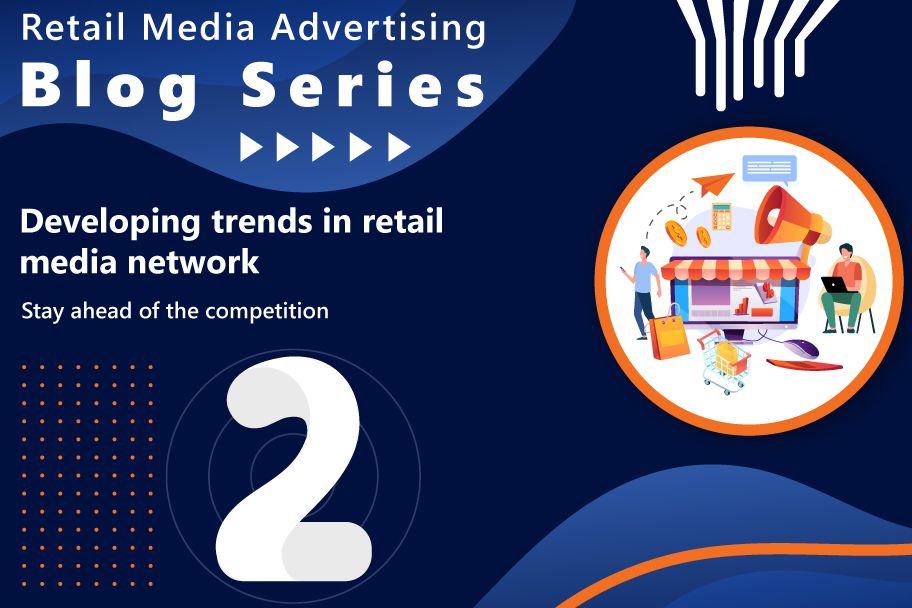Stay ahead of the competition
At iOPEX, we have seen enough inferences from one of our earlier blogs that the retail media industry promises to show high market potential. This will influence retail companies to evolve new solutions to meet the marketing demands of the brands. Third and first-party customer data have been playing a major role to provide retail brands with the right demographics and customers to improve the audiences for driving brand awareness and acquisition. The key is to devise a simple and scalable process supplemented by robust technology to convert a product catalog to an ad and monetize it (Catalog to Commerce).
Catalog to Commerce Model
Developing Trends in Retail Media:
The role of first-party data: Now that we are expecting 3rd party data to get seized by end of 2023, retail media networks must alter their strategies to keep the momentum going, thanks to the first-party data that have in the form of digital interactions, customer behavior, purchase history, user preferences, etc. to create targeted ads based on different individuals’ interests. Apple’s App Tracking Transparency framework has introduced a feature to seek users’ permission before collecting any of their activity data. The retail-media networks will adopt a similar approach for targeting and re-targeting ads to their users/customers.
Video Ads for better reach: Currently, retail media advertising mainly focuses on static sponsored products and search ad placements in the form of shoppable ads targeting an audience group who are in the final stage of the funnel - purchase/buy stage. The future trend will be to run product-based demo-type video ads which will reach the audience at different stages of the funnel (awareness, consideration, purchase, etc.) Nearly 75% of the audience prefer video ads compared to reading about a product. Some of the major retailers like Amazon have already started adopting Livestream selling strategies to stay competitive in the growing market.
The growth of Demand-side platforms: Criteo and Citrus have already joined hands with Target to create demand-side platforms to maximize the potential for their ad inventory, customer access, and first-party customer data. Retail brands will face challenges tying up with multiple retail-media networks to showcase and sell their products, instead, a partner who can connect all these networks in one place will be the trend with both self-service and managed service options to gain a better return on ad spend (ROAS). This also helps retailers to choose different ad types like in-app advertising, video ads, CTV, etc.
Off-site programmatic ads: A single retail media network cannot accommodate all the retailers in one place to run ads on their e-commerce site - with growing demand and niche players in the market, retail media networks should use their first-party data and allow advertisers to target ads to shoppers “off” the retailer’s e-commerce site by placing ads on brand-safe site across the internet world and other devices like Android play store, Apple app store, OTT platforms, etc. An average American spends 4.1 hours on mobile/day - programmatic ads can help target and re-target ads and automate its operations like media buying, ad placement, ad tracking, and campaign optimization.
Machine Learning and AI: ML Ops and AIOps have started to play a major role in most business operations, and ad ops are no exception. Retailers that want to offer better suggestions to their customers and predict buying patterns will be using ML/AI to run more personalized ads. The combination of programmatic ads and intelligent automation (ML/AI) will be the future to utilize customer data and provide a top-notch customer experience. This will help all the three parties, the retail media networks, advertisers, and the customers.
Catching up with the race is key
While the major retail brands like Amazon, Walmart, and Target have an upper hand with the strong customer base and first-party customer data - with new technologies in place, better product discoverability, focusing on off-site ads, social media integration, influencer marketing can help any retailer to stand apart as a retail-media network. When more retail-media networks develop it will again cause new challenges for the advertisers to reach their intended audience and this is where media partners who can provide end-to-end marketing, advertising, and creative solutions can provide the necessary support to leverage data and run targeted and re-targeted ads using programmatic ads.
If you are looking to stay ahead of the competition and adopt the new trends in retail advertising, then talk to us at [email protected] or contact us
Read other blogs from the series
Blog 1: Retail media networks redefining online advertising spend
Blog 3: Essential Factors for Achieving Success in Retail Media Network











